|
Go to the Talks page for news about not one, not two, but three talks - on Birch trees, the Isle of Purbeck and organic farming. Something for everyone and so good to have these to look forward to.
.. that's, Can wildlife and modern farming co-exits? Peter Thompson gave the answer as a resounding 'yes' - given the four Ps - Payments, People, Planning and Passion. And it's happening right here on our doorstep, with farming 'clusters' which are turning away from ploughing on bare earth to a range of conservations measures that not only benefit farmers with increased yields, but are massively beneficial to wildlife.
Meanwhile, try the earthworm challenge that Peter issued: take a shovel-full of soil from your own garden and see how many earthworms there are in it. If you've got 16, you're Doing Your Bit! Go to Talks/whatyoumissed for the full story, and links to the organisations spearheading green revolution. Keep on running to stay fit - but keep an eye on the ground and you may be like Archie Thomas who found a new variety of apple when out running 'in the Nadder Valley' according to BBC and The Guardian. which also has a photo of the golden apple. Two other media items: one with a mix of good and bad news about farmed animals. 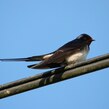 Photo: Abby Eaton Photo: Abby Eaton The other closer to home, about how you might be right if you think you've seen a swallow, as an increasing number often of juveniles, are staying put in the UK. Not, sadly, with very good chance of making it through the winter. Peter Thompson's talk to over 30 members via Zoom last Thursday (19 November) really cheered me up. Many local farmers both in the Nadder Valley and round Martin Down south of the Chalke Valley, have formed into 'clusters' to undertake wildlife, soil and water conservation initiatives on the 'landscape' scale necessary to make any significant impact. There are now at least 140 such clusters in England. A fuller account of this excellent talk - our first 'virtual' evening meeting (but more to come) - will follow.
But more encouragement meantime via Maggie Paul of Nadder Community Energy, who recommended the film, Kiss the Ground, 'Narrated and featuring Woody Harrelson, it's an inspiring and groundbreaking film that reveals the first viable solution to our climate crisis.' There's also a book, for those without Netflix. There's a complementary film, Living soil. made by the Soil Health Institute in the US, which is available on YouTube. Woody Harrison who like me initially tended towards despair, concludes, ' I'm not giving up. So you shouldn't, either.' 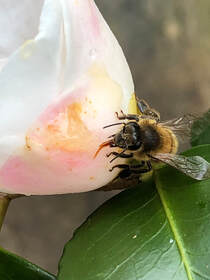 For several years now, I've found it's not unusual to find a lost or exhausted honeybee and have to try to resuscitate it - this one's sipping a drop of honey I put on a flower for it. It gives me such a kick when they fly off purposefully. The Wildlife Trusts' Action for Insects booklet is full of ideas you can work on now to help insects next summer. It's downloadable here, one of two ideas for helping insects from the RHS in this month's Wild about Gardens bulletin. The other is that is a good time to be planting hedges, so why not forget the yew and the box and try some from a list of the 'ten great choices of native flowering and fruiting shrubs for hedging.' Peter Thompson, Game & Wildlife Conservancy Council - Can wildlife and modern farming co-exist?19/11/2020
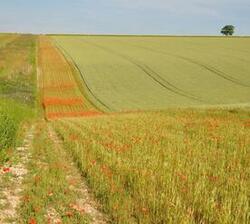 Peter has very kindly made available here the slides he used for his talk, which include all the photographs that so clearly demonstrated that the answer is a resounding 'yes!' Peter began by comparing British farming in previous decades with what's happening now. Most farms used to rotate arable with dairy, beef, sheep or pig rearing and that was highly beneficial to wildlife. But now the country is broadly divided into vertical strips down its length, with purely arable mainly on the eastern side and animal farming increasing to the west. (More rain so more grass, maybe?) A particular problem has been autumn ploughing, which has left the land bare through the winter with no stubble to prevent soil erosion in heavy rain and resulting pollution of waterways with fertilisers and pesticides. What is required to help wildlife recover is year round care – nesting habitats, summer food for the young and food throughout the winter. And it can be done. On Peter's own farm, wildlife was declining like others but within five years populations were back up to levels of the 1960s. Peter trained as agronomist so can now talk about getting best of both worlds. Pesticide use is still very important but caring for the soil as much or more so, and this has been largely ignored until recently. Darwin is mostly known for his Origin of species, but his last publication was on the subject of earthworms and the vital role they can play, now known to restore carbon from plant growth back into the soil. For that to happen, new methods of rearing animals are needed, such as 'mob grazing' (described in the film, Kiss the ground). Indeed, Darwin said, 'It may be doubted if there are any other animals which have played such an important part in the history of the world as these lowly organized creatures.' Controlling insects with pesticides can still be necessary, but better still to choose flowers which attract insects that will eat aphids you don't want - 'Marmalade fly' hoverflies especially are very good at that, along with ladybirds and lacewings (as every gardener now knows). And for pollinators, bumblebees will fly even in poor conditions but they do need tussicky grass in field margins to overwinter, often in small mammal holes. To make a difference, such changes need to be on a 'landscape' scale, hence the 'farm clusters' now established throughout the UK and notably in our own backyard in the Chalke Valley, southward round Martin Down on Cranborne Chase and in our own Nadder Valley, where Peter Shallcross now leads the new Farmers Group.
We can be encouraged by the work done, for which Payments out of Government (ie taxpayers') funds are almost always one of the four essentials along with People, Planning and Passion. The latter three are definitely not in short supply so let us hope the first can withstand the assault of COVID and BREXIT. (This video is of the famous 'jangling keys' song of the corn bunting, now on its way back in this area thanks no doubt to our Farm Clusters.) For more information about these Farm Clusters, go to their website: it's a fascinating read. 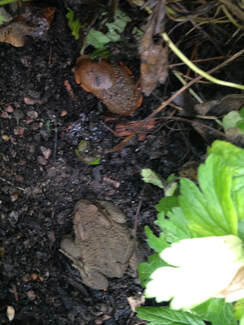 Chairman Peter Shallcross's monthly update includes some fascinating detail from Andrew Graham about how our native mammals and amphibians hibernate. Even in this mild weather they're hunkering down, as I found when I began heaving bags of rubble from garden works out to my car to take to the 'dump'. I found a toad and now feel guilty that I just had to move him, but put a big heap of 'strulch' on top of him, and will add some decorative bark to that. I'm very fond of my apparently several toads - I found this one in a stand-off with a large slug, detected 'heavy breathing' under strulch I'd used to compost a rose, and saw one just looking out of his splendid 'hole' - realising exactly why that favourite dish is called just that! And I found a tiny newt in my parking bay which I took to a neighbour who has a little pond - it went straight into a cosy crevice. But how do these creatures get to my garden? I've found newts, toads and frogs even before that new pond was created. 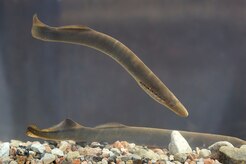 Lampreys Tiit Hunt, CC BY-SA 3.0 httpscreativecommons.orglicensesby-sa3.0, via Wikimedia Commons Lampreys Tiit Hunt, CC BY-SA 3.0 httpscreativecommons.orglicensesby-sa3.0, via Wikimedia Commons Read about my theory in the Field Trips/Whatyoumissed account of the Nadder Invertebrates Survey on 19 September. But how amazing, I'm not sure I had any idea of what a lamprey looked like. I should have been there. Maybe next year ... The National Gallery's 'Picture of the month' celebrates nature and the symbolism of flowers and insects. This is a lovely series, whether the subject is nature or not.
Even in the depths of December it’s amazing that some birds sing, brightening short winter days and bringing the promise of spring still months away. Robins, wrens and song thrushes are the easiest to hear but by the end of the day they will be joined by dunnocks and blackbirds.
The NASA is working out how humans could possibly be put into hibernation on the long voyage to Mars, but Andrew Graham has discovered how other mammals spend the winter: ‘Winter approaches and nature makes its preparations. While birds can migrate to warmer climes, other animals cannot, so need to hibernate. In the UK bats, hedgehogs and dormice hibernate. This allows them to get through the cold winter weather, when it would be impossible for them to find enough food to supply their energy needs. During the late summer months they need to feed up to increase their fat reserves and find or create a sheltered spot in which to hibernate. Then, as daylength shortens and the temperature drops, their metabolism slows. In a state of torpor or full hibernation, the metabolism may be only 5% of the normal rate, the body temperature much reduced and breathing almost stopped. This will slow the rate at which the fat reserves are expended. Hedgehogs look for suitable places to create their nests – or hibernacula – under hedges, in piles of brushwood or under sheds. A hibernaculum is made of old dry leaves and grass and is densely constructed to wrap the animal in a protective layer to keep out the cold and hide it from predators. In caves, the low temperature will never plunge to the depths outside on frosty nights. They can provide a place free from predation and so are a safe place for bats to hibernate. The caves in the old quarries at Chilmark provide a winter roost for at least six bat species and are so important that they have been protected as Sites of Special Scientific Interest. Hazel dormice make a nest in a ball of tightly woven dead leaves on the woodland floor, often under old, coppiced trees or hazel stools. These locations provide the dampness they need to ensure they do not dehydrate during hibernation. Badgers do not hibernate but will be much less active in winter, spending much more time underground. Other mammals keep busy throughout the year and in so doing provide food for the animals and birds that prey upon them. At this time of year evidence of mole activity – molehills – can be particularly noticeable. This is because the wet weather drives the worms and grubs on which they feed closer to the surface. The mole’s permanent burrows are deeper down with excavated soil compacted into the tunnel walls. But when they follow their food upwards by creating new temporary tunnels closer to the surface, they push the spoil above ground to create the molehills. Amphibians also hibernate. Frogs and newts will spend the winter months at the bottom of ponds, which makes them vulnerable if they are small and freeze up. Toads like to find somewhere sheltered and damp such as tree stumps, piles of brushwood and logs. It is therefore important not to disturb these piles during winter.’ |
Photo: Avocets (Izzy Fry)
The headers display photos taken by our members. Do get in touch via the Contact Form if you'd like to submit a photo for selection.
Archives
April 2024
Categories
All
|
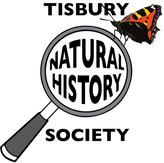
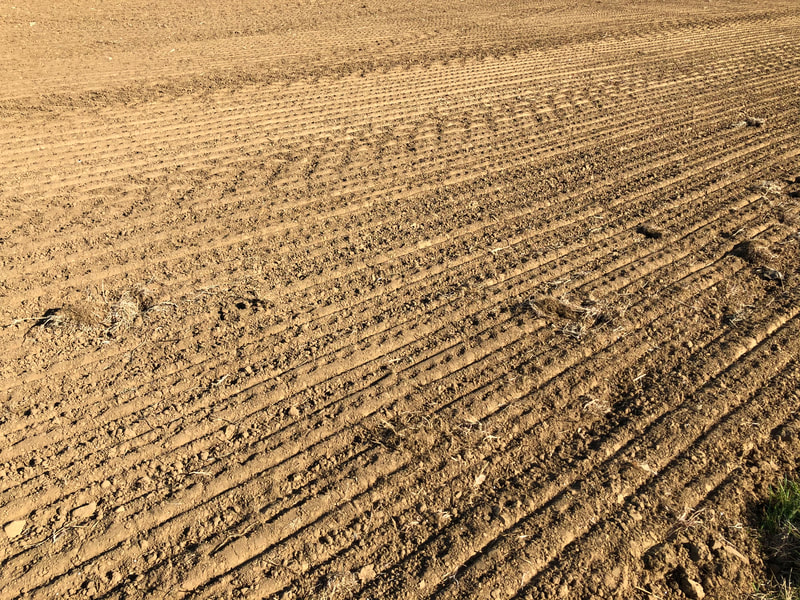
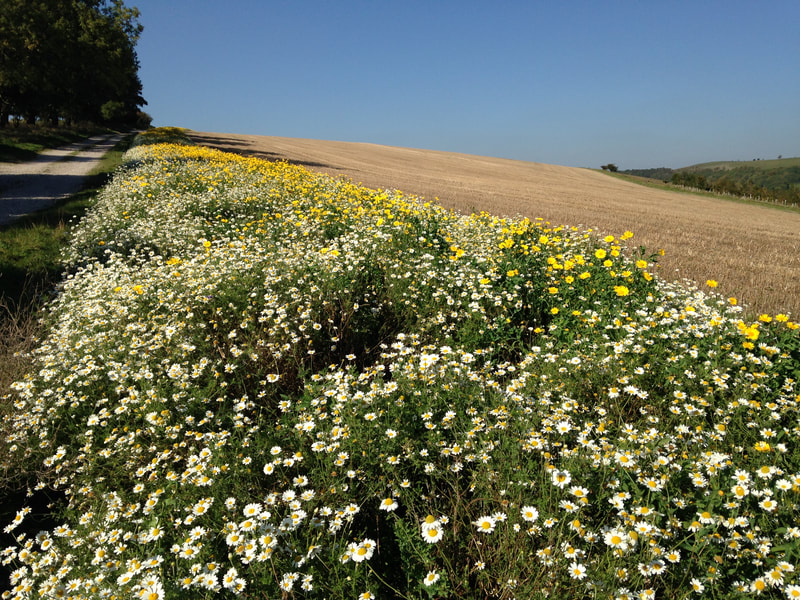
 RSS Feed
RSS Feed